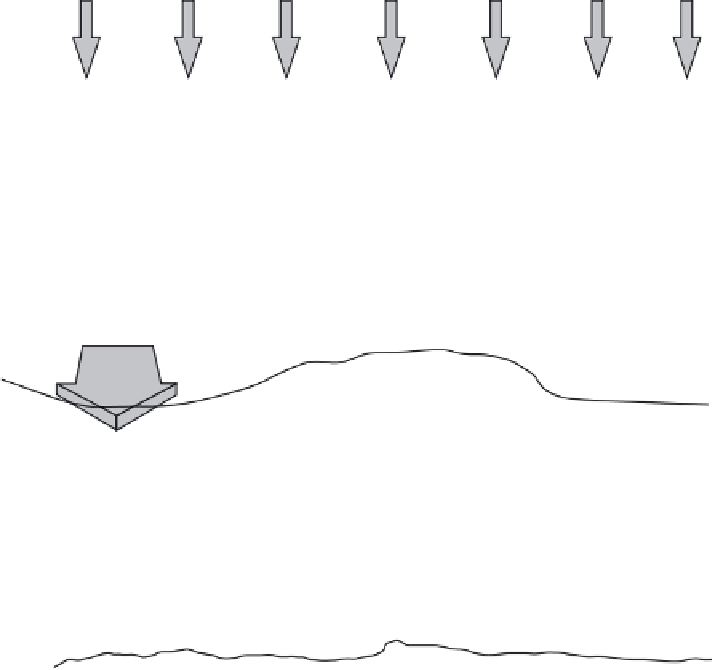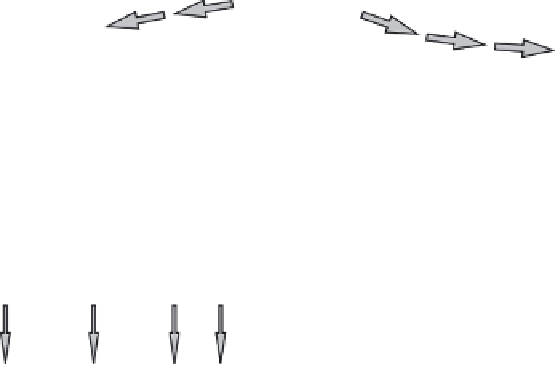Geoscience Reference
In-Depth Information
Interception
Interception
Leaf drip
Throughfall
Throughfall
Unconcentrated
Unconcentrated
runoff
Unconcentrated
runoff
Splash
Sediment
and nutrient
transport
runoff
Concentration of fines
Concentration of fines
beneath shrub
Concentration of fines
beneath shrub
Concentration of
gravel in intershrub
beneath shrub
Concentration of overland
flow in intershrub area
Sediment
and nutrient
transport
Unconcentrated
runoff
Figure 11.1
Conceptual structure of rainfall-runoff processes (after Wainwright, Parsons and Abrahams, 2000).
often overlooked case in which such a mechanism could
occur in drylands is where soils are thin and sitting on
relatively impermeable bedrock, so that the local soil-
moisture-storage capacity is low. Dryland soils tend to
have intrinsically slow rates of formation (Chapter 7) or
are thin because of removal by erosion processes.
In the third mechanism, the formation of subsurface
pipes can deliver runoff rapidly from slopes to channels. In
certain drylands, pipes are a significant method of runoff
production. In all three cases, an understanding of the
hydraulic characteristics of the soil, in particular the in-
filtration rate, is fundamental for understanding rates of
runoff production. However, rates of infiltration and in-
cident precipitation can be modified by a range of other
factors, notably interception, stemflow and leafdrip, em-
phasising further the feedbacks from vegetation type and
cover. Between storm events, soil moisture can change
significantly and rapidly, especially in the hot arid re-
and thus changing thresholds for all three types of runoff-
producing mechanism. Vegetation can be a further factor
in this feedback. Key runoff-producing areas tend to be
found on steep slopes, either abandoned after agriculture
or with sparse vegetation, and are composed of runoff-
promoting soils such as marls (Bull
et al.
, 2000). These
areas do not necessarily relate to the channel network and
the mosaic pattern they form is key to producing floods in
ephemeral channels. These conceptual models of runoff
are in contrast to the variable source area (VSA) developed
for humid regions in the 1960s (Betson, 1964; Hewlett and
Hibbert, 1967; Dunne and Black, 1970), which proposed
that saturated areas produce most of the storm runoff as
the water table rises to the soil surface over an expand-
ing area as rainfall continues. Saturation overland flow
initially spreads up low-order tributaries, then up unchan-
nelled swales and gentle footslopes of hillsides (Dunne,
Moore and Taylor, 1975). The position and expansion of










